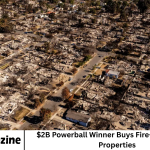In a stunning and heartbreaking revelation, more than 30 children have been rescued from a major human trafficking operation in a prominent U.S. city. The large-scale rescue mission, carried out through a coordinated effort between federal, state, and local law enforcement agencies.
- A Coordinated Multi-Agency Operation
- The Alarming Scope of the Trafficking Crisis
- Online Exploitation: The New Frontier for Traffickers
- Human Toll: Trauma and Recovery
- Root Causes: Poverty, Neglect, and Systemic Failures
- Law Enforcement’s Expanding Role
- Community and Parental Awareness
- Policy Response and Government Initiatives
- Expert Warnings: The Crisis Is Worsening
- The Human Face of the Crisis
- A Call to Action
- Frequently Asked Question
- Conclusion
Highlights the growing crisis of child trafficking in the United States. The operation — which authorities described as one of the most extensive of its kind in recent years — has sparked renewed calls for stronger national action to combat human exploitation.
This latest rescue not only sheds light on the dark and hidden world of child trafficking but also exposes the alarming increase in cases driven by economic instability, online exploitation, and organized criminal networks.
More Read: China Condemns Trump’s 100% Tariff Threat, Defends Its Rare Earth Export Restrictions
A Coordinated Multi-Agency Operation
The successful rescue was the result of months of careful surveillance and intelligence gathering involving multiple law enforcement bodies, including the FBI, Homeland Security Investigations (HSI), state police, and local departments.
Officials have not disclosed the city’s name to protect the identities of the victims and maintain the integrity of ongoing investigations, but sources confirm that the operation targeted a sophisticated trafficking ring operating across state lines.
Authorities said the rescued children ranged in age from 6 to 17 and had been subjected to various forms of exploitation, including sexual abuse, forced labor, and coercive manipulation by traffickers.
Several arrests were made, and the suspects are facing federal charges related to child exploitation, kidnapping, and organized crime. According to a spokesperson from the Department of Justice, the mission involved extensive digital tracing.
And undercover operations that ultimately led to the dismantling of a network suspected of trafficking minors through online recruitment, fake job advertisements, and coercive social media interactions.
The Alarming Scope of the Trafficking Crisis
Child trafficking in the United States has reached disturbing levels. According to the National Human Trafficking Hotline, thousands of cases are reported annually, though experts estimate that the actual number is significantly higher due to underreporting and the hidden nature of the crime.
Trafficking often occurs under the guise of legitimate employment opportunities, social relationships, or online grooming. With the rise of digital platforms and encrypted communication tools, traffickers have adapted their methods, making detection increasingly difficult for authorities.
A recent report from the U.S. Department of Health and Human Services (HHS) indicated that more than 60% of trafficking victims are minors, many of whom come from vulnerable backgrounds — including those experiencing homelessness, poverty, or family instability.
Online Exploitation: The New Frontier for Traffickers
Experts emphasize that the digital landscape has become a powerful tool for traffickers seeking to exploit children. Social media platforms, gaming apps, and online chatrooms have increasingly been used to target minors.
Offenders often pose as peers, mentors, or recruiters, building trust before luring victims into abusive situations. The FBI’s Cyber Division reported that cases of online grooming and exploitation surged during the COVID-19 pandemic as children spent more time online and traffickers capitalized on the lack of supervision.
Even after the pandemic, the problem has continued to grow, with many traffickers using the dark web to trade explicit content and coordinate criminal operations. The recent rescue underscores the critical importance of cyber forensics in uncovering trafficking networks.
Investigators relied heavily on digital evidence, including chat logs, location data, and financial transactions, to identify both victims and perpetrators.
Human Toll: Trauma and Recovery
While the successful rescue operation marks a victory for law enforcement, experts caution that recovery for the victims is only beginning. The emotional, physical, and psychological trauma experienced by trafficked children can take years to heal.
Child psychologists and social workers are now working with the rescued minors to provide immediate medical care, counseling, and legal assistance. Specialized shelters and advocacy organizations are also stepping in to offer long-term rehabilitation and education opportunities.
“Rescue is just the first step,” said Dr. Alicia Moreno, a child trauma specialist based in Washington, D.C. “These children need stability, therapy, and a strong support system to rebuild their sense of safety and trust in others. The scars of trafficking run deep.”
Nonprofit organizations like Polaris and the National Center for Missing and Exploited Children (NCMEC) are collaborating with local agencies to ensure the victims receive comprehensive care.
Many of these groups stress that long-term reintegration — not just immediate rescue — should be the central focus of anti-trafficking efforts.
Root Causes: Poverty, Neglect, and Systemic Failures
Experts note that child trafficking does not occur in a vacuum. Economic hardship, family breakdown, lack of access to education, and weak social safety nets are among the driving factors that make children susceptible to exploitation.
In many cases, traffickers exploit children who are already in precarious situations — including those in foster care, juvenile detention centers, or homeless shelters. Studies show that traffickers often prey on children with low self-esteem, unmet emotional needs, or a history of abuse.
Advocates argue that preventing trafficking requires addressing these systemic vulnerabilities. Strengthening community programs, improving access to education, and expanding child protection services are essential steps toward reducing the risk.
Law Enforcement’s Expanding Role
The U.S. government has ramped up anti-trafficking operations in recent years through initiatives like “Operation Cross Country,” led by the FBI, which targets trafficking networks and rescues minors.
These operations often involve hundreds of agents working across jurisdictions to identify and dismantle criminal organizations. Despite progress, officials admit that enforcement alone cannot end trafficking.
The crime’s complex, transnational nature demands a multi-pronged approach that includes prevention, awareness, victim protection, and global cooperation. Homeland Security Investigations has increased its use of data analytics, artificial intelligence.
And international intelligence-sharing to track trafficking rings. Meanwhile, prosecutors are seeking harsher penalties for offenders, especially repeat violators and those involved in organized criminal enterprises.
Community and Parental Awareness
Law enforcement agencies emphasize that community involvement and parental vigilance are key to combating child trafficking. Parents are urged to monitor their children’s online activity, educate them about digital safety, and maintain open communication about potential dangers.
Schools are also being encouraged to implement awareness programs that teach students how to recognize grooming behavior and report suspicious activity. Educators often play a crucial role in identifying early warning signs among vulnerable youth.
In some communities, faith-based organizations and local nonprofits have launched outreach programs aimed at at-risk children, offering mentorship, job training, and emotional support. These initiatives help create protective environments that reduce vulnerability to traffickers.
Policy Response and Government Initiatives
In response to the escalating crisis, federal lawmakers have introduced several bills aimed at strengthening anti-trafficking measures. These include increased funding for victim rehabilitation, expanded law enforcement training, and stricter oversight of online platforms that fail to curb exploitative content.
The Trafficking Victims Protection Act (TVPA) remains the cornerstone of U.S. anti-trafficking legislation, but experts argue that more resources are needed to ensure consistent enforcement across states.
Several states are also passing their own laws to enhance penalties for traffickers, mandate awareness training in schools, and require social media companies to cooperate with investigations.
Internationally, the United States continues to collaborate with organizations such as INTERPOL and the United Nations Office on Drugs and Crime (UNODC) to disrupt cross-border trafficking networks.
Expert Warnings: The Crisis Is Worsening
Despite recent rescues, human trafficking experts warn that the crisis is deepening, fueled by economic disparities, migration pressures, and the expansion of digital recruitment methods.
Dr. Emily Carver, a senior analyst with the Global Human Rights Institute, stated that trafficking rings are becoming more organized and technologically advanced. “We’re seeing traffickers using encrypted communication, cryptocurrency payments.
And AI-generated identities to evade detection,” she said. “Law enforcement is racing to keep up, but prevention and public education remain the most powerful tools we have.” The U.N. estimates that over one million children globally are trafficked each year.
And the United States remains both a destination and a source country for victims. Experts stress that combating this issue requires not only enforcement but also a collective societal commitment to protecting children.
The Human Face of the Crisis
While statistics highlight the scale of the problem, the individual stories of rescued children bring its emotional impact into focus. Many survivors describe years of abuse, manipulation, and fear. Some were lured with promises of fame, money, or love — only to find themselves trapped in cycles of exploitation.
In one case, a 14-year-old girl was rescued after being trafficked across three states. She had been groomed through social media by a man posing as a modeling agent. Her story mirrors thousands of others — each one a reminder of the urgent need for vigilance, compassion, and justice.
A Call to Action
The recent rescue operation serves as both a victory and a wake-up call. It demonstrates the effectiveness of collaborative law enforcement but also exposes how widespread and insidious child trafficking has become.
Experts, policymakers, and community leaders agree on one thing: ending this crisis requires national unity. From stronger laws and better digital safeguards to grassroots education and survivor advocacy, every level of society has a role to play.
As one investigator put it, “For every child we rescue, there are many more still waiting to be found. We can’t afford complacency.”
Frequently Asked Question
What is human trafficking?
Human trafficking involves the illegal trade of people for the purposes of forced labor, sexual exploitation, or other forms of coercion. It is often referred to as modern-day slavery and affects millions worldwide, including children.
How were the children rescued in this recent operation?
The rescue was the result of a coordinated effort between federal and local law enforcement agencies, using digital surveillance, undercover work, and intelligence-sharing to dismantle a trafficking network.
What happens to rescued children after they are freed?
Rescued children are placed in protective custody, given medical care, counseling, and legal support. Long-term recovery includes therapy, education, and reintegration into safe environments.
Why is child trafficking increasing in the United States?
Experts attribute the rise to factors such as online exploitation, economic hardship, family instability, and organized criminal activity. The digital age has made it easier for traffickers to reach potential victims.
What laws protect children from trafficking in the U.S.?
The primary legislation is the Trafficking Victims Protection Act (TVPA), along with various state laws that impose strict penalties on traffickers and provide funding for victim services.
How can parents and communities help prevent trafficking?
Parents should monitor their children’s online activity, talk openly about safety, and report suspicious behavior. Communities can support local organizations, raise awareness, and advocate for stronger protections.
What can be done to end child trafficking?
Ending trafficking requires a multi-faceted approach — stronger laws, education, digital safeguards, victim rehabilitation, and global cooperation. Every individual can contribute by staying informed and vigilant.
Conclusion
The rescue of over 30 children from a major trafficking ring underscores both the progress being made and the challenges that remain. It is a testament to the dedication of law enforcement and advocates.
But also a sobering reminder that child trafficking continues to plague even the most developed societies. The fight against human trafficking must extend beyond arrests and prosecutions. It must address the root causes, empower communities, and prioritize victim healing.









